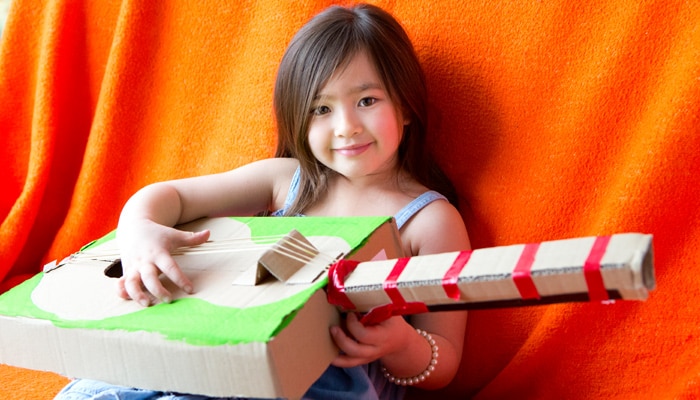While we believe that the books and resources recommended may be of value to you, keep in mind that these are suggestions only and you must do your own due diligence to determine whether the materials are appropriate and suitable for your use. PNC has no sponsorship or endorsement agreement with the authors or publishers of the materials listed.
RECYCLING

Let's Make Music
Children will reuse materials to create musical instruments.

Lesson Objective
Children will creatively repurpose or reuse a variety of used or discarded items to make musical instruments.
ScienceArt
What You'll Need
Note: Let available materials guide your creativity. The children do not have to make a specific, recognizable instrument. An instrument is anything that can be used to make a rhythmic sound.
- An assortment of used materials from the recycling bin: paper towel rolls, long tubes from gift wrap, bottle caps, tennis balls, craft sticks, yogurt cups/butter tubs/oatmeal containers/plastic water bottles with lids or caps, plastic spoons, ribbon, etc. – at least 1 per child
- Nut shells, dried peas, rice, bird seed, or other items that can be placed inside a container to make noise – enough for each child to place in their container
- Scissors – 1 per child
- Masking tape – 1 roll per table
What To Do
- Begin a discussion about musical instruments (see Did You Know?).
- Explain that a musical instrument is something that can be used to make sounds. Share instruments that are in the classroom.
- Explain that lots of things end up in the trash. We also recycle many things, which helps the environment. Reusing or repurposing things is another great way to help the environment. Explain that they will reuse items to create instruments.
- Have the children look at the materials and discuss how to create something to make music.
- Guide the children as they experiment with different materials. There are many ways to produce sounds. They can shake things, tap something with their hand or a stick, blow through something, or strum an object. Encourage their creativity – anything that can be used to make a rhythmic sound is an instrument!
Resources
Home School Resources
Home educators: use these printable lesson PDFs to teach this lesson to your home schoolers. They're available in English and Spanish.
Content Provided By
Common Core State Standards Initiative – These lessons are aligned with the Common Core State Standards ("CCSS"). The CCSS provide a consistent, clear understanding of the concepts and skills children are expected to learn and guide teachers to provide their students with opportunities to gain these important skills and foundational knowledge [1]. Visit the CCSS


